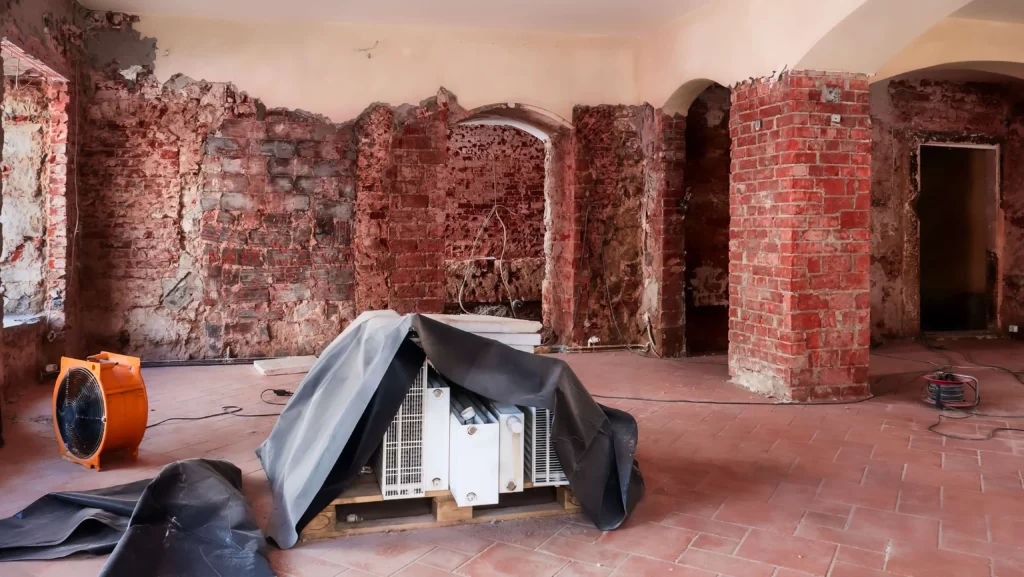Orlando Water Damage Restoration Project
Water damage is an issue any homeowner will likely encounter at one point. It’s often destructive and will damage various aspects of your home, both structural and non-structural. Excessive flooding can affect your foundation’s structural integrity, leading to your home’s possible collapse. A soaked ceiling can cave in, falling on members of your household, which can be an accidental hazard that can lead to fatalities.
However, it’s good to point out that water damage is reversible once you adopt the right tips and tricks. The reversal is referred to as water damage restoration. The restoration process involves the removal of the water and repairing any associated damage.
Are you a homeowner and have flood water in your home? Has water completely soaked up your walls and floors? How do you plan on going about the water damage restoration process? Read on to find the answers through the tips and tricks listed below:
- Call Your Insurance Provider
Insurance covers many risks, including water damage. If you’ve taken an insurance policy that caters to water damage, you must report the incident to your insurance provider as soon as possible.
The provider will inspect the damage independently and tell you if you’re eligible to make a claim. However, it’s good to note that your insurance company may refuse to compensate even if you’re qualified to make a claim. Therefore, you must seek the services of an Orlando water damage lawyer to assist and defend your rights. They’ll engage the insurance provider on your behalf and ensure they compensate you accordingly. Since it can be costly to have every water damage restored, being able to claim compensation would be a big help.
- Identify The Source Of Water
Water damage results from various sources. It could be a leaking pipe in your basement, a damaged roof, or floods, among other sources. The location of your water damage should guide you in finding the water source. Suppose your ceiling is the water-damage culprit. You’re likely to find several stains on the ceiling. Consider inspecting your roof directly. You’ll probably find holes in your roof that allow water to seep in. If you can’t identify the source, consider seeking Orlando water damage restoration services. They are the experts in this field and can quickly locate the source of water damage in no time.
Identifying the source of your water damage will help you address the source of the problem before undertaking your restoration project.
- Disconnect Your Service Provision
The service provision, in this essence, refers to water and electricity. It’s best to disconnect all service provisions as soon as possible. However, it often depends on the source of water damage. Turn off your main water supply if the source is a leaking pipe. Doing this will prevent further damage to your household and its items. On the other hand, if the source is a leaking roof, you don’t necessarily have to turn off your main water supply.

Regarding electricity, switch off the main power outlet to stop the electric current flow. Do note that if the water in your home gets into contact with any electricity outlet, it could lead to electrocution. If you want to prevent short circuits from happening, it’s advisable to unplug all your electrical appliances. Remember that short circuits can damage your appliances, forcing you to repair or replace them depending on the extent of damage, thus adding to your expenses.
- Assess The Damage
Keep in mind that water will cause severe damage to your property. Therefore, you must identify the aspects of your home that the water has damaged. It could be your ceiling, floor, walls, furniture, HVAC unit, etc.
The benefit of early water damage assessment is being able to plan your next course of action effectively. For instance, if your ceiling is soaked in water, then you need to replace your entire ceiling. For a leaking pipe, you can decide to repair or replace it based on the extent of the damage. Additionally, it’s also advisable to look out for signs of mold in the damaged areas, as it grows in damp areas. So, you should eradicate all mold before starting your restoration process because if left unattended, it could be harmful to everyone’s health.
It would be best if you were thorough as you inspected the damage since missing an area that needs restoration can cause significant issues down the line.
Conclusion
Water damage restoration is an easy process; this article has shown that. However, your water damage restoration’s success depends on your knowledge in identifying where the problem is coming from. But with the expertise and guidance of a water damage restoration specialist, it would be much easier to accomplish. It would help if you also considered implementing the tips mentioned above to complete your project successfully.

